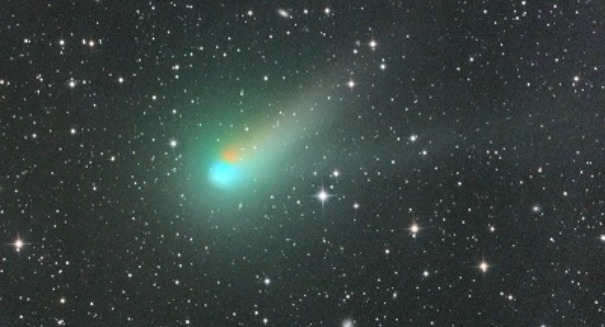
On Jan. 17 it will be closer to the Earth than it will ever get again -- and then it will leave us for good.
Comet Catalina, which has been making its approach to Earth since November, was expected to be closer to the Earth on New Year’s Day than it ever has been, and give us an even more spectacular view by January 17.
The comet which is green with two tails, is steadily making its first and only trip through the inner solar system, according to cbc.ca. Spectators were expected to have clear visibility of the comet on the morning of January 1, since it had moved higher in the sky.
Those waiting to see it at night, January 1, probably had a more difficult time because of a bright quarter moon, according to the Royal Asrtonomical Society of Canada member Michael Watson.
As a consolation, he indicated January 8 through 10 will present another opportunity for viewing “when there will be no moon in the early morning sky and the comet will be very close to the earth.”
Ottawa-based astronomer, Gary Boyle recommended setting a digital camera’s ISO to 1600 and using a 30 second exposure, would be spectators’ best chance of getting “impressive shots of the comet,” since spotting the comet’s two tails with naked eye would be difficult.
Boyle said those who had been following the comet for several weeks with binoculars would have seen a “fuzzy blob in the sky, a bit of color to it, little bit green.” Astronomers had hoped that it would have been more visible once it crossed the sun and although that had not yet happened, they predicted the comet would get brighter once it had an “outburst of dust and gas.”
Comet Catalina is thought to have originated from a region full of icy objecst emitting from the Oort cloud. It has since passed the sun with a current path “expected to permanently eject from the solar system.

Leave a Reply